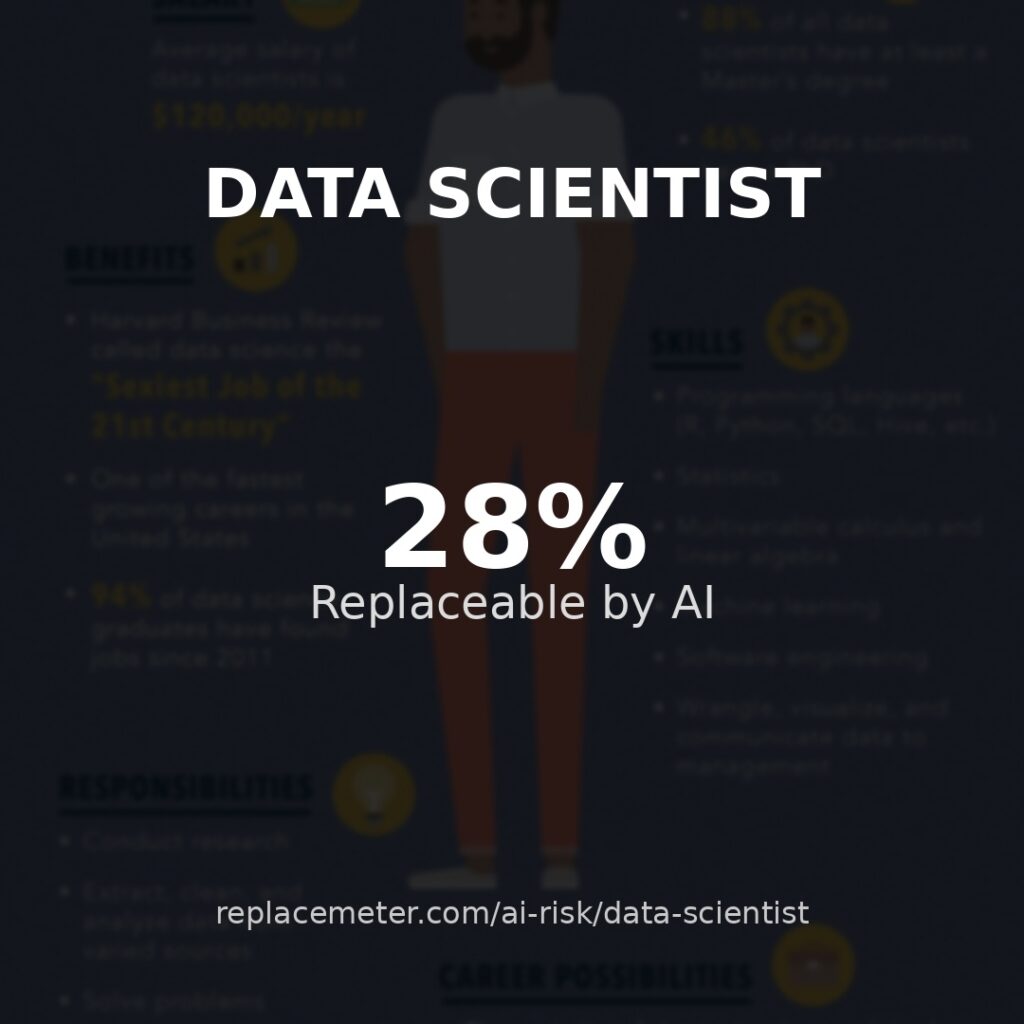
Can AI Replace Data scientist in 2025
📊 AI Risk & Work Flexibility
🤖 AI Risk Assessment
Risk Level Summary
How likely AI will automate tasks in this role
How protected your career is from automation
💡 Understanding the Scores
Task automation risk reflects what AI may take over. Career security reflects how your skills and experience protect you from that.
🧠 AI Resilience Score (76%)
How resistant the job itself is to AI disruption.
- Human judgment & creativity (25%) — critical thinking, originality, aesthetics
- Social and leadership complexity (20%) — team coordination, mentoring, negotiation
- AI augmentation vs. replacement (20%) — whether AI helps or replaces this work
- Industry demand & growth outlook (15%) — projected job openings, industry momentum
- Technical complexity (10%) — multi-layered and system-level work
- Standardization of tasks (10%) — repetitive and codifiable tasks
👤 Personal Adaptability Score (78%)
How well an individual (with solid experience) can pivot, adapt, and remain relevant.
- Years of experience & domain depth (30%) — experience insulates from risk
- Ability to supervise/direct AI tools (25%) — AI as co-pilot, not replacement
- Transferable skills (20%) — problem-solving, team leadership, systems thinking
- Learning agility / tech fluency (15%) — ability to learn new tools/frameworks
- Personal brand / portfolio strength (10%) — reputation, GitHub, speaking, teaching
📊 Core Analysis
Analysis Summary
Data scientists translate business questions into measurable problems, wrangle data, design experiments, and build/evaluate models. GenAI now accelerates subtasks (EDA, code scaffolding, documentation), but human-led problem framing, evaluation, governance, and productionization remain critical.
Career Recommendations
Own the full lifecycle (from data contracts to deployment and monitoring).
Specialize where demand is spiking (LLM evaluation, RAG, causal inference, time series).
Adopt MLOps best practices (experiments, registries, CI/CD for ML).
Use GenAI to accelerate EDA and prototyping; keep humans-in-the-loop for governance.
Communicate impact with clear metrics and cost-performance tradeoffs.